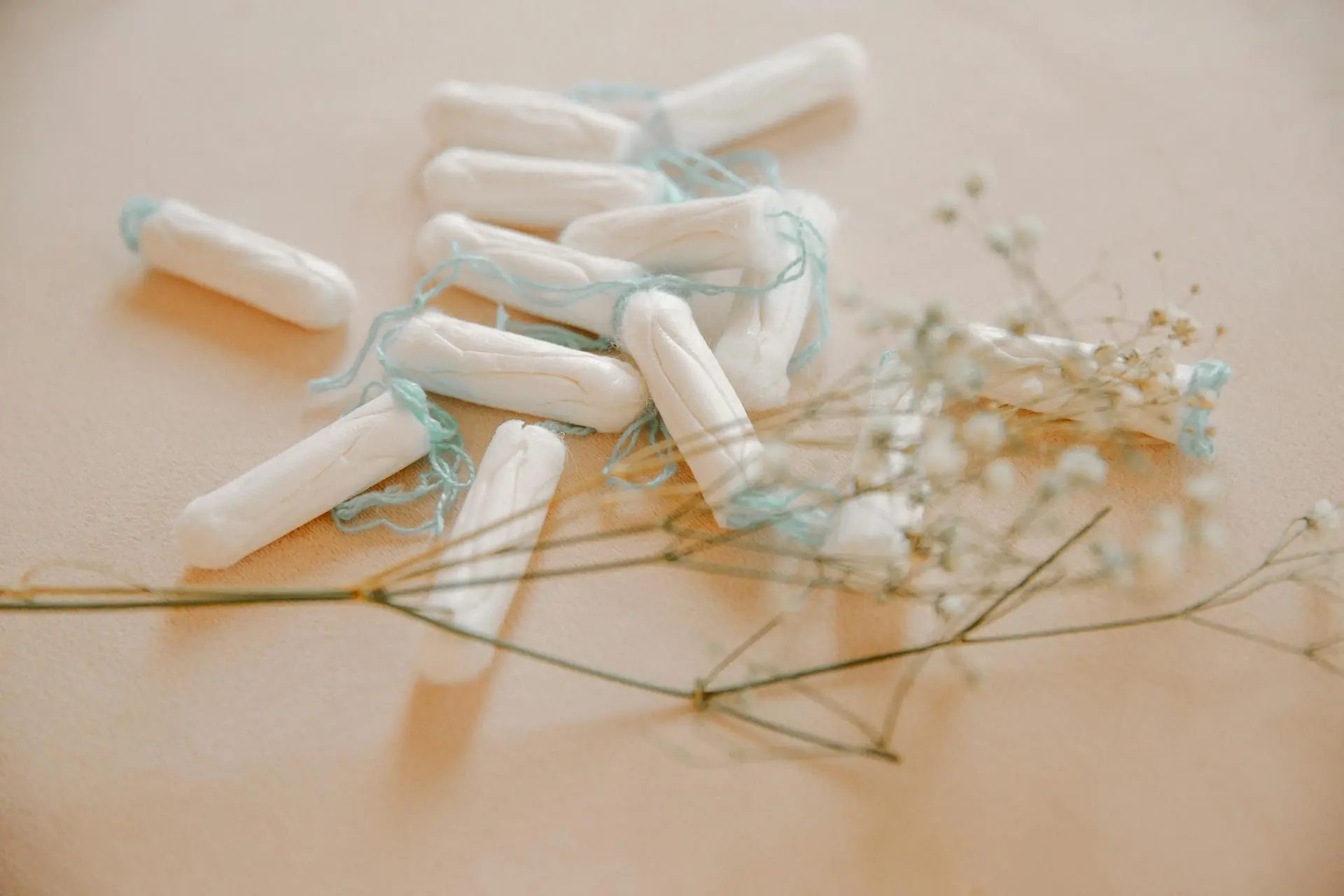Tampons have been a staple in menstrual care for decades, offering a discreet and convenient solution to managing periods. But as conversations around menstrual health and product safety grow, many women are rethinking what’s inside these tiny products and how they impact their bodies.
In this article, we’ll explore the materials used in the tampon, its benefits, potential concerns, and how to choose the healthiest option for your period.

Photo by Polina Zimmerman
What Are Tampons Made Of?
Tampon may seem simple, but its construction and materials vary widely. Most conventional ones are made from a mix of rayon, a semi-synthetic fiber, and cotton, with some also including polyester or other synthetic fibers.
Here’s a closer look:
- Known for its high absorbency, rayon is derived from wood pulp and treated with chemicals to create a soft, cotton-like texture.
- Some tampons use regular cotton or organic cotton, either alone or blended with rayon. Organic cotton is free from pesticides and synthetic fertilizers.
- Many tampons come with applicators made from plastic or cardboard. Plastic is smooth and easy to use but less eco-friendly, while cardboard is biodegradable but less comfortable for some.
Unfortunately, conventional tampons may also include:
- Chlorine-treated fibers, which can leave behind dioxins, a byproduct linked to health risks like cancer and hormone disruption.
- Fragrances and dyes, which can irritate sensitive skin or cause allergic reactions.
The Benefits of Tampon
1. Discreet and Portable
It’s small, lightweight, and easy to carry, making it a convenient option for any situation.
2. Freedom of Movement
It sits inside the body, allowing for unrestricted movement during activities like swimming, running, or yoga. Unlike the pad, the tampon doesn’t shift or bunch up, offering reliable protection.
3. Wide Range of Options
They come in various absorbency levels (from light to super-plus), making it easy to find the right one for your flow. Brands also offer different applicator styles or applicator-free options, catering to individual preferences.
4. Reduced Odor
Because it collects menstrual fluid internally, it reduces the exposure to air, which can minimize odor.
5. Accessible
Available at nearly every grocery store, pharmacy, and convenience store, it is one of the most accessible menstrual products worldwide.
Potential Concerns About Tampon
While it’s generally safe, there are a few considerations to keep in mind:
1. Toxic Shock Syndrome (TSS)
TSS is a rare but serious bacterial infection associated with prolonged tampon use (the longer you leave it in, the higher the risk is) or using the highly absorbent one unnecessarily. To minimize the risk, always use the lowest absorbency needed and change your tampon regularly (!).
2. Chemical Exposure
Conventional ones may contain trace amounts of dioxins, pesticides, or synthetic fibers, which some believe could harm sensitive vaginal tissues over time.
3. Dryness or Irritation
Tampons, especially highly absorbent ones, can disrupt your vaginal pH or cause dryness. This is more common during lighter flow days or with frequent use.
4. Waste and Environmental Impact
They contribute to waste (particularly those with plastic applicators). While they are convenient, their disposable nature has a significant environmental footprint.
Choosing the Best Tampon for Your Health
Here are some tips on how to make the healthiest and safest choice:
1. Opt for Organic Cotton
Organic cotton tampons are free from pesticides, synthetic fibers, and chlorine bleaching. So, look for brands that offer organic options that prioritize safety and sustainability.
2. Avoid Fragrances and Dyes
Look for those labeled “unscented” and free from dyes or unnecessary additives to avoid irritation.
3. Choose the Right Absorbency
Always match the tampon’s absorbency to your flow. Using a super-absorbent one on a light flow day can cause dryness and increase TSS risk.
4. Consider Applicator-Free Options
Applicator-free tampons produce less waste and are often more compact, making them an eco-friendly and portable choice.
5. Check for Certifications
Look for certifications like GOTS (Global Organic Textile Standard) or TÜV to ensure the product meets strict health and environmental standards.
Are Tampons Right for You?
While they are a reliable choice for many women, they may not suit everyone. If you’re prone to irritation, prefer reusable products, or want a zero-maintenance option, alternatives like menstrual cups, pads, or period panties may be a better fit.
The best choice is one that aligns with your comfort, health, and values.
Other Articles


